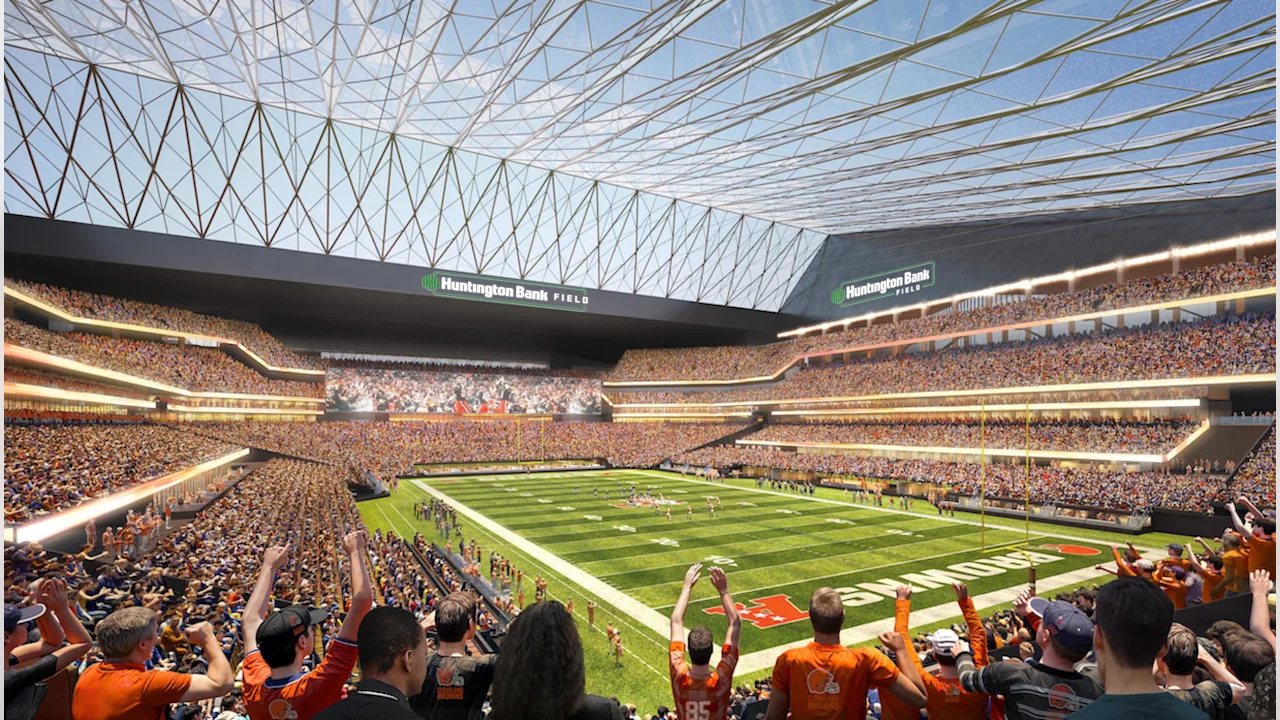On March 18, Haslam Sports Group (HSG) announced their plans for a new Cleveland Browns stadium with a letter from Chief Operating Officer of the Browns David Jenkins and a flyby video of the proposed facility. The move comes after HSG’s decision to shift the Cleveland Browns’ home stadium, Huntington Bank Field, from its lakefront location to Brook Park, Ohio.
Included in the plans are a transparent stadium roof, updated parking, a “Fan Wall,” “unique club, concourse experiences and a wide range of products not available at the current location,” according to the letter released. Jenkins’ letter says that the proposed stadium will “drive the fiscal and economic impact necessary to pay for the public portion of the funding model” while remaining accessible for home-game attendees.
“We love Cleveland and Northeast Ohio and are committed to our community, our schools, our youth sports programs, our involvement in local healthcare, and our extensive impact programs. This project reinforces our dedication to Greater Cleveland and all of Northeast Ohio,” Jenkins said. “We’ve made a promise to ensure our team remains the Cleveland Browns, and our Brook Park plans solidify that commitment.”
These plans were not met with cheers from all. In a statement on March 19, Cleveland Mayor Justin Bibb blasted the Haslams for their stadium plan, saying, “The Haslam Brook Park scheme will burden taxpayers and damage downtown to benefit billionaires.” In his statement, Bibb said that “[t]heir scheme relies on average ticket prices nearing $700, parking rates north of $100, increasing taxes for hotels, parking, and rental cars, and the assumption thousands of people will pay high rent to live in luxury apartments in the shadow of the airport.” Bibb also referenced the Haslams’ previous public commitment to renovate the Browns’ current stadium: “[t]he City of Cleveland offered nearly half a billion dollars to keep the Browns in the city, based on the Haslams’ original request for a transformed lakefront stadium.” He added, “It is disingenuous and insulting to say—as the Haslams do in their recent federal court filing—that the city doesn’t have a competitive plan for the lakefront.”
Bibb also claimed that the stadium move violates state law. Ohio’s Modell Law states that teams playing in taxpayer-funded stadiums cannot move their stadium without permission from the “political subdivision” (in this case, the City of Cleveland) or less than six months’ notice and an opportunity for the political subdivision and any individuals within it to purchase the team.
HSG refuted this statement in a press release on March 18, claiming that “the City of Cleveland has been misguiding Clevelanders by inaccurately conflating the Brook Park project with Art Modell breaking a lease and moving a team to an entirely different state. The City has done so by invoking the so-called Modell Law—an Ohio law passed in the 1990s in response to the relocation of the Browns out of Ohio—to try and halt the project.” Brook Park is less than 20 miles from the Browns’ current lakefront stadium.
HSG has also filed an updated lawsuit against the City of Cleveland. In the March 18 press release, HSG’s Chief Administrative Officer and General Counsel Ted Tywang said, “Our actions in court are intended to ensure that the city’s irresponsible and baseless attempt to apply the Model Law to the Browns does not slow our momentum to build a world-class stadium right here in Northeast Ohio for the Browns, our fans and the entire region.”
According to the Statehouse News Bureau, an amendment regarding funding for the new facility has been drafted and would insert a $600 million package of bonds into the state budget. This $600 million would contribute to the $3.4 billion necessary to build the new stadium and surrounding development.



